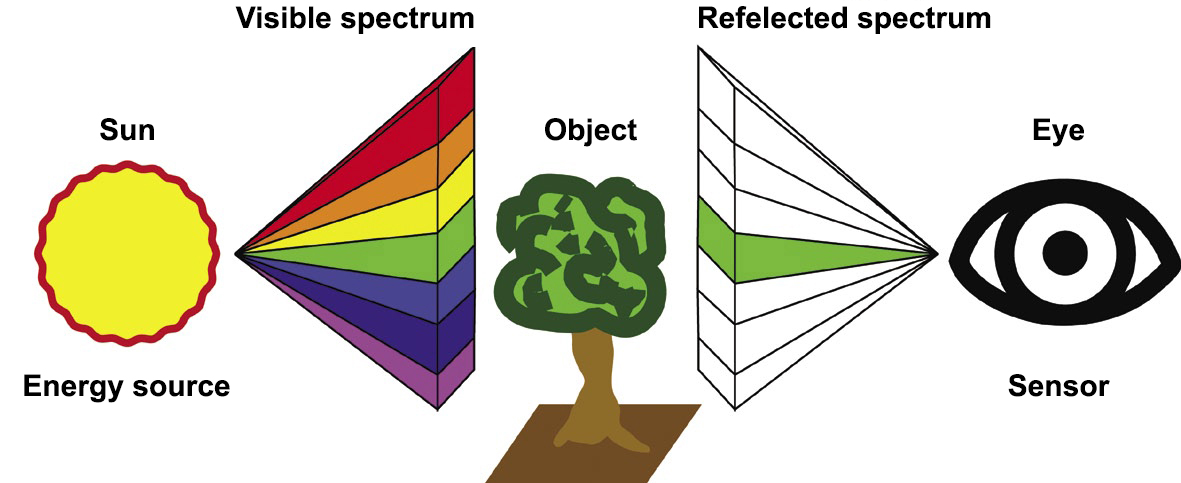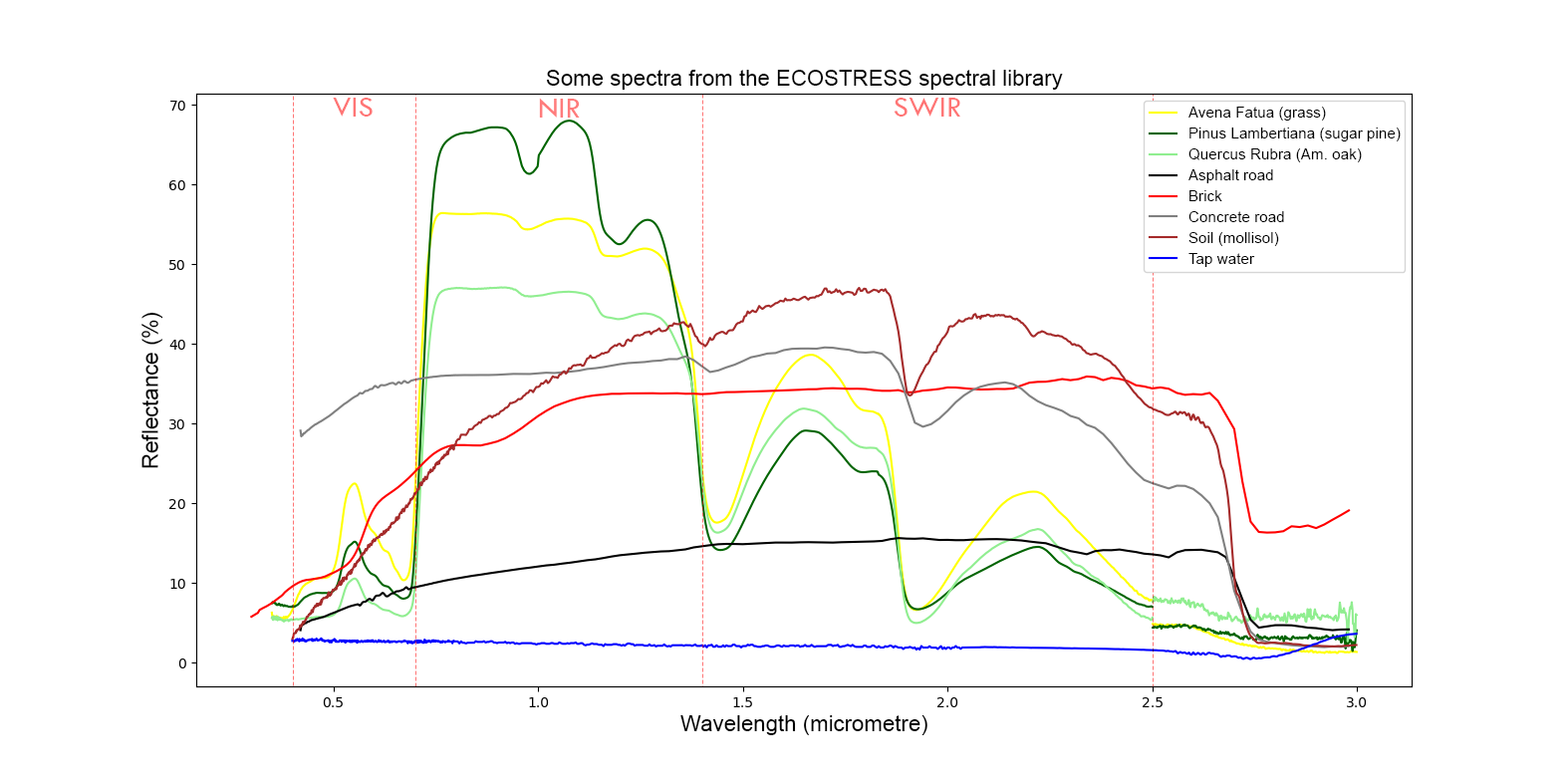I - WHAT CAN WE OBSERVE AND HOW?
4- HOW DO YOU EXPLAIN THE COLOUR OF AN OBJECT?
Solar radiation is not absorbed in the same way by all objects on earth. Leaf chlorophyll, for example, mainly uses the blue and red parts of the solar spectrum to perform photosynthesis. The light they reflect is therefore stripped of these wavelengths and in the visible part of the spectrum only contains green, the part that is not absorbed. This explains why leaves appear green.
The surface layers of the ocean absorb red and green light, which explains the bluish colour of the underwater world.
The interaction between absorption and reflection obviously does not only occur in the visible part of the spectrum. For example, vegetation reflects not only green light, but also near and mid-infrared light, even more intensely.
The reflective characteristics of different types of surfaces can be illustrated by a graph showing the reflectance, the proportion of reflected electromagnetic radiation, as a function of wavelength. Such graphs are also called spectral signatures because they are typical for certain types of objects. They allow us to analyse the spectral characteristics of objects to distinguish between different object types or to determine their biophysical properties.
Source: ECOSTRESS spectral library
In radar remote sensing, the active instrument emits a well-defined wave with a very limited bandwidth in the microwave range. Strictly speaking, the spectral signature does not play a role here, but only what can be observed with this wavelength based on the characteristics of the reflected signal. The most important determining factors are the moisture content, the structure and the roughness of the soil in relation to the wavelength used. The longer the wavelength and the lower the soil moisture content, the deeper the microwave can penetrate and the less it is reflected back to the sensor.




